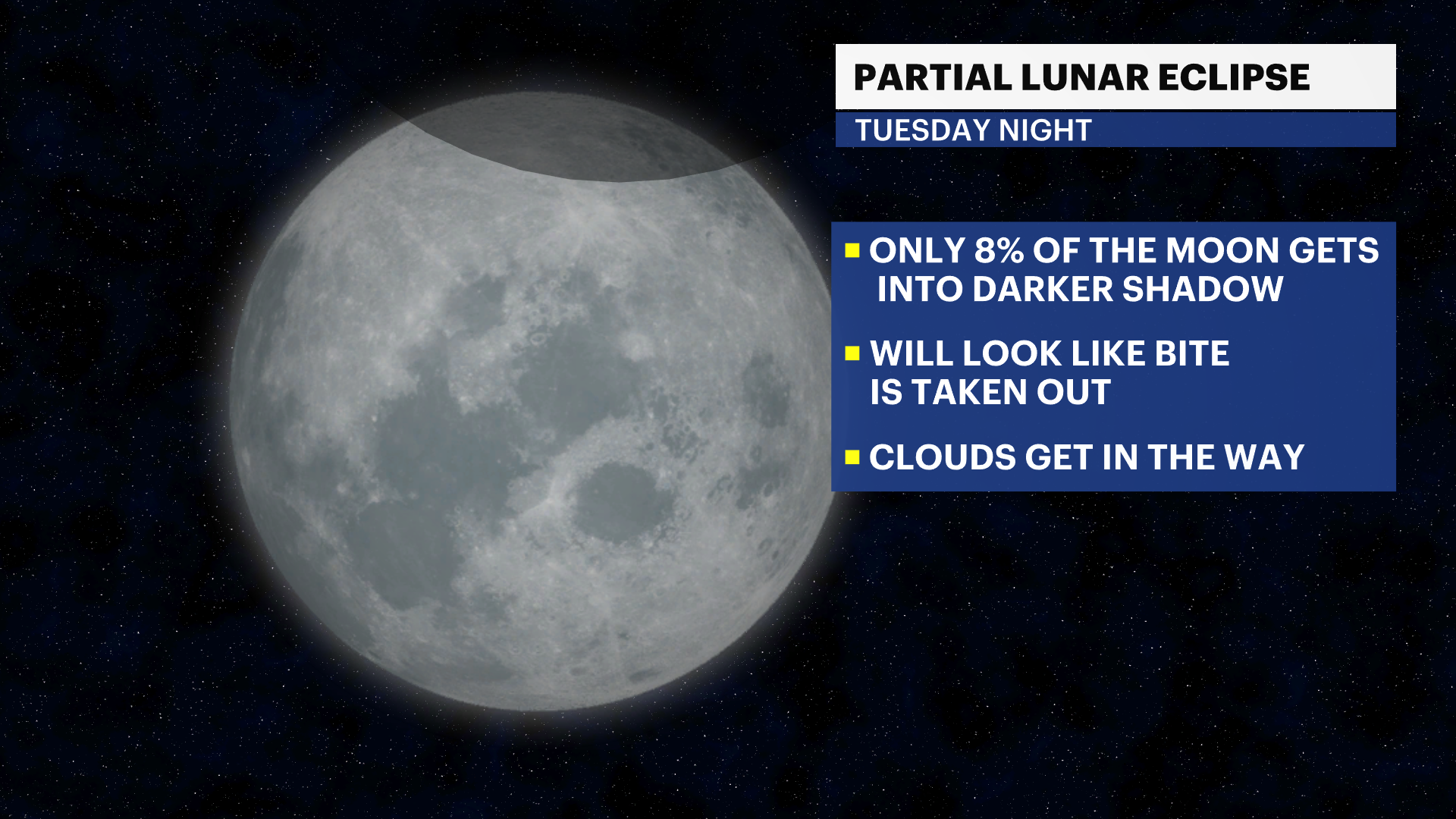More Stories
Tuesday night’s full moon is a supermoon and it will also be a partial lunar eclipse. Unfortunately, it looks like the sky won’t be completely clear and it may not even be visible for some in the tri-state area. If by some chance we have some clearing during the evening, you’ll want to head out soon after sunset. A full moon will rise in the east as the sun sets in the west. The moon will look huge when it’s rising. This isn’t because it’s a supermoon, but due to the illusion of being closer to the horizon.

A lunar eclipse happens when the Sun, Earth and the moon all line up. The moon will pass through the Earth’s shadow, and this makes it look darker. This lunar eclipse is only a partial one and 8% of the moon will be covered by Earth’s shadow this time. From our vantage point, it will look like someone, or something, has taken a bite out of the moon. The darker shadow will appear first at the top left-hand side, then advance slowly to the right side. The whole thing starts at 8:41 p.m. and that’s when the moon will move into Earth’s outer lighter shadow, or the penumbra. This part is often hard to see, but you may notice the moon start to dim a little. With some clouds around too, this part may be even hard to see. The darker shadow occurs at 10:13 p.m. and this is called the umbra. Typically, when we think of a lunar eclipse, this is the part we think of and see. The peak of the eclipse is at 10:44 p.m. and by 11:16 p.m., the moon will be out of the umbra. The entire thing ends at 12:47 a.m.

This full moon is closes to the autumnal equinox, so it’s known as the harvest moon. It’s a little closer in its orbit too, closer to perigee, so it’s also unofficially dubbed a “supermoon.” In fact, it’s the second of four of these types of full moons in a row. This eclipse is also safe to view with the unaided dye, but binoculars or even a telescope will only enhance your view. As a special treat, the planet Saturn will also be nearby all night.

More from News 12
0:49

Families ring in 2026 with special newborns across the state
1:05

Watch Night services mark Emancipation Proclamation anniversary
0:51

Milford honors Revolutionary War POWs who endured harsh conditions
2:05

Changes to Metro North ticketing to begin on Sunday
0:37

Connecticut Make-A-Wish holds annual polar plunge
0:25
